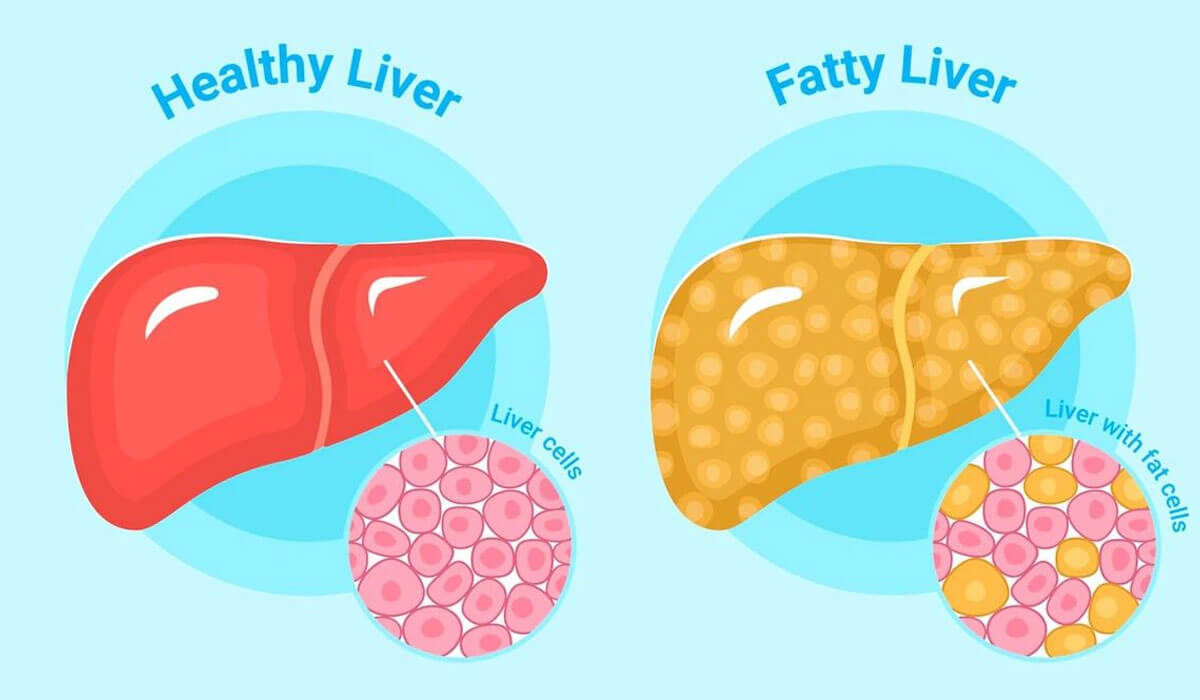
The liver doesn’t complain. Not in the beginning. It stores. Filters. Works through the day. And one day, fat starts to build. Slowly. Without making a sound. You don’t feel it. Blood tests might miss it. But the liver begins to change.
There’s no sharp pain. No urgent signal. Just subtle signs—tiredness, a heavy stomach, clothes fitting tighter. You assume it’s stress. Or aging. Or a busy week. You forget the liver’s part in it all.
By the time a scan shows something, the fat has been there for months. Maybe years. And you only look back, wondering when it began.
A Liver That Stores More Than It Should
Fat isn’t supposed to build there. Not like this. The liver handles it, to a point. But when intake outpaces processing, storage begins. Excess sugars turn into fat. Calories without use settle in the cells.
This isn’t just about diet. It’s also about timing. Sleep. Stress. Inactivity. All these shift how the liver behaves. It’s not just what you eat. It’s how your body handles it.
And when the liver stores more than it releases, inflammation follows. Cells stiffen. Fibrosis may start. The silent phase ends.
You Don’t Have to Drink to Harm Your Liver
People think liver disease comes from alcohol. Not always. Non-alcoholic fatty liver disease (NAFLD) exists. And it’s common. It creeps in without the bottle.
You might not drink at all. Still, fat builds. Your enzymes rise. Your scans change. It’s hard to explain. Especially when habits don’t seem reckless. But the liver doesn’t need alcohol to struggle.
What it needs is balance. Of movement. Of nutrition. Of rest. And when that balance breaks, even without alcohol, damage still begins.
The Body Doesn’t Store Energy the Same Way for Everyone
Some gain fat around the stomach. Others in the liver. It’s not about weight alone. Thin people can have fatty liver. Overweight people may not. Genetics decide part of it. Lifestyle shapes the rest.
Insulin resistance plays a role. When cells stop responding well, the liver steps in. It tries to help. But ends up storing more. And with time, the cycle becomes harder to stop.
You can’t feel insulin resistance. But your liver does. And it adjusts in a way that makes the next step worse.
Fat in the Liver Doesn’t Just Stay There
It spreads its influence. Through hormones. Through inflammation. Through altered metabolism. It affects blood sugar. Blood pressure. Heart function. The liver connects to everything.
You don’t just develop liver disease. You start seeing its effects elsewhere. Fatigue becomes frequent. Focus drifts. Digestion slows. Lab results shift out of range.
The liver isn’t the problem. It’s the messenger. By the time symptoms appear, it’s been warning in silence.
Prevention Starts Long Before the Problem Is Named
There’s no miracle food. No single habit. Just small choices, made early. Walking after meals. Less sugar at night. Sleeping enough. Hydrating with purpose.
Most people wait for a diagnosis. But prevention lives in the unnoticed. In eating slower. Moving daily. Managing stress before it clogs the system.
You can’t see your liver healing. But it does. Quietly. With consistency. With time. Not overnight—but over many regular days.
Blood Tests Can Miss It, But You Still Feel Different
Your doctor says your tests are fine. But you still feel tired. Still bloated. Still off. That’s because liver enzymes don’t rise early. They wait. Sometimes until damage grows.
Ultrasound finds what blood tests don’t. Texture. Density. Fat deposits. That’s where truth shows. And even then, it’s not always dramatic. Just enough to say: something changed.
You knew it. You felt it. The tests just needed time to catch up.
It’s Not About Detoxing—It’s About Less Load
The liver doesn’t need juice cleanses. Or magic teas. It needs less to carry. Simpler foods. Fewer processed ingredients. More fiber. Fewer sugars without function.
Your liver cleans itself. Every day. But too much input slows it down. Overloads it. Eventually, it stores what it can’t clear. And that’s where problems begin.
You don’t need to shock it with extremes. Just support it with less noise. More routine. More clarity in what you eat and when.
A Liver That Heals Slowly, But Surely
The good news: it can recover. Unlike many organs, the liver can reverse fat. Even early fibrosis. But not without change. Not without real effort.
You don’t feel healing happen. There’s no moment where you suddenly improve. It’s gradual. But lab values shift. Energy returns. Digestion feels lighter. Focus steadies.
The liver speaks in stillness. But it also heals that way. Through small steps. Through time. Through choosing differently, again and again.
